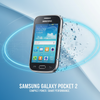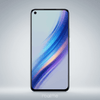Samsung Galaxy Pocket 2 Review: Small Size, Smart Performance

Introduction of Samsung Galaxy Pocket 2
The Samsung Galaxy Pocket 2 remains one of the smallest Android smartphones ever launched in India. Designed for users who value compact size, lightweight build, and basic smart performance, this device helped introduce millions of entry-level buyers to the world of touchscreens. Though it belongs to the 3G era, the phone still holds relevance for feature-phone upgraders, students, senior users, and minimal device lovers looking for a secondary handset. In this Samsung Galaxy Pocket 2 review, we explore performance, battery usage, usability, apps compatibility, and whether this tiny smartphone can still deliver smart performance in a pocket-friendly body.
Design & Build: Mini Phone, Maximum Comfort
The Samsung Galaxy Pocket 2 was built to fit easily in one hand and slide into the smallest pockets without effort. Unlike modern huge screens, this phone showcases an ultra-compact 3.3-inch form factor, making it one of the most comfort-focused smartphones in Samsung’s early lineup. The phone carries a plastic unibody design, typical for budget phones of its category, but polished with Samsung’s signature ergonomic curve that allows comfortable grip during texting, calling, and scrolling. Weighing just around 107 grams, the device feels incredibly light compared to current smartphones that average between 180–220 grams.
Despite the small size, Samsung ensured solid build quality. The buttons were tactile and firm, giving premium feedback uncommon in ultra-budget devices. The back panel offers slight texture, preventing slips during long calls or single-hand operations. This compact design was especially appreciated by users who traveled long hours on buses or trains, where one-hand usage becomes a real benefit. The tiny body also meant less strain on fingers, thumbs, and wrists, making it ideal for heavy texters.
However, the compact display also came with limitations. Watching long videos or browsing text-heavy pages required zooming more frequently. Yet, for its original buyers, the goal was not multimedia luxury but simple usability, reliability, and mobility. The device’s durability was impressive, surviving everyday scratches and minor drops, which made it a trusted companion for young smartphone beginners and practical users across India.
Display & Interface: Basic but Functional for Daily Tasks
The 3.3-inch TFT LCD display on the Samsung Galaxy Pocket 2 was never meant for ultra-sharp media consumption but succeeded in delivering clarity for everyday quick tasks. With a modest resolution of HVGA 320 × 480 pixels, icons and text remain readable with occasional zooming. The screen performs well indoors but struggles slightly under direct sunlight—an expected reality in this price range and era. Still, for users focused on calling, SMS, WhatsApp Lite, and simple browsing, the display serves its purpose efficiently.
The interface originally came with Samsung’s early TouchWiz UI, known for its simplicity, easy menus, bright icons, and beginner-friendly layout. Navigation is smooth as long as the usage stays within lightweight apps and basic settings. The TouchWiz interface, combined with Android 4.4 (KitKat on select variants), optimized RAM resources efficiently, ensuring fewer frame drops during basic multitasking. App opening speeds are moderate—not instant like 2025 devices, but fair considering hardware capacity.
Scrolling, dialing, accessing the contact list, and typing on the T9 keypad touchscreen remain seamless due to screen compactness. The phone does not deliver modern cinematic satisfaction, but for its core audience—students, delivery contact phones, backup handsets, seniors—it continues to feel straightforward and stress-free. The display’s true strength lies in minimal distraction usage, quick access, and portability instead of heavy video-centric entertainment.
Performance: Small Phone, Smart Power for Primary Needs
The Samsung Galaxy Pocket 2 performance runs on a single-core 1.2 GHz processor and 512MB RAM, clearly targeting entry-level Android users. While this may sound outdated in a 2025 world of 6–12GB RAM budget phones, optimization plays the real hero here. The chipset handles daily workloads such as calls, SMS, contact apps, FM radio, calculator, WhatsApp Lite, and small utility applications without instability.
Multitasking is limited but manageable when users avoid heavy apps. Light games like Subway Surfers (older versions), Temple Run 1, & Candy Crush run with acceptable frame support, but high-graphics games do not perform. The phone performs best when treated as a smart feature phone, not a gaming powerhouse. Since app size in 2025 has increased, only Go edition or Lite apps run comfortably, making the best experience purely communication-centric.
For calling and messaging, the performance feels surprisingly stable. There is no heating during calls or short browsing sessions. RAM limitation restricts background applications, but this also helps preserve battery efficiency—a major trade-off that benefited users who didn’t require notifications from many apps. The Samsung Galaxy Pocket 2 review for performance concludes that the device still delivers reasonable dependability for users seeking a compact secondary or minimal Android device.
Storage expands up to 32GB via microSD, allowing users to install more basic apps and store media offline. The performance is not modern-budget-phone fast, but it is smartly aligned to simplicity and stability, making it useful in situations demanding a small, distraction-free, communication handset.
Software & App Usability in 2025 India
With support up to Android 4.4 (variant dependent), app compatibility becomes the main challenge today. However, the device still supports:
- WhatsApp Lite / older APKs
- Facebook Lite
- YouTube (old APK or browser mode)
- Basic banking SMS apps
- Google Search (via browser)
The software performs most reliably when unnecessary apps are uninstalled. Samsung originally included smart system file optimization, meaning the OS consumes less RAM and keeps UI steady. Since modern heavy apps are beyond its capacity, this phone is now ideal for:
-
Senior citizens using simple UI
-
Backup phone to store contacts
-
UAE/India SIM for calling only (for migrant workers)
-
Students requiring basic internet, no distractions
-
Emergency communication phone
While not a software-update device today, the OS remains stable and crash-resistant when used minimally.
Battery: Lasting Longer Because It Does Less
The 1,200 mAh removable battery is tiny on paper, but powerful in reality due to low hardware demands. Because the display is small and apps are light, the battery often lasts:
- 1–2 days in basic use (calls + SMS only)
- 10–14 hours moderate browsing
Longer standby time than many 2025 budget 5G phones when background apps are disabled
Removable battery gives extra advantage—users can swap batteries if needed, a lost convenience in modern smartphones. Charging takes time (5–10W adapter era support), but users focus on endurance more than speed. The battery performance supports the phone’s minimal, small-workload hardware, making it great for long non-gaming usage.
Connectivity, Storage & Audio: Built for Basics
The phone supports:
- 3G, Wi-Fi, Bluetooth 4.0, Micro USB
- 4GB internal storage (usable ≈2GB) + MicroSD expansion
- FM radio without internet
- Loud single speaker output for small room audibility
- 3.5mm headphone jack
These features still make it relevant today for offline music, radio, podcasts (downloaded), and long calls. Audio is not stereo or HD but loud enough. Wi-Fi is stable. The real advantage remains SIM calling reliability and pocket mobility.
Pros & Cons
Pros
-
Ultra-compact size
-
Lightweight and easy to carry
-
Stable calling & Lite apps performance
-
Removable battery
-
Expandable storage
-
Samsung brand reliability
Cons
-
Not suitable for modern heavy apps
-
No 4G or 5G support
-
Average sunlight visibility
-
Slow charging
-
Very limited RAM for multitasking
Who Should Buy Samsung Galaxy Pocket 2 in India 2025?
This phone in 2025 is for users who desire:
- Tiny handset for calling
- Low-cost backup phone
- Seniors with small hands
- Delivery boys storing contacts
- Students avoiding distractions
- Minimal Android lovers
Conclusion of Samsung Galaxy Pocket 2
The Samsung Galaxy Pocket 2 review proves that good performance is not always about power, but purpose. When smartphones are becoming larger, heavier, and more distracting, this small device still stands as a compact communication-focused secondary phone for India. It delivers smart performance for basic messaging, calling, light browsing, and offline audio use. Though outdated in network generation, the phone remains reliable, portable, durable, and practical. If your requirement is simplicity, comfort, vintage compact design, and a genuine Samsung device experience, the Pocket 2 still makes sense as a backup smartphone in 2025 India.
FAQs of Samsung Galaxy Pocket 2
Q.1. Is Samsung Galaxy Pocket 2 good in 2025?
Yes, but only for basic use like calls, SMS, WhatsApp Lite, and small apps.
Q.2. Does Samsung Galaxy Pocket 2 support 4G?
No, it supports 3G + Wi-Fi + Bluetooth only.
Q.3. Can Samsung Galaxy Pocket 2 run WhatsApp?
Yes, using WhatsApp Lite or older APK versions.
Q.4. How long does Samsung Galaxy Pocket 2 battery last?
1–2 days on calls and SMS, moderate browsing 10–14 hours.
Q.5. Should I buy Samsung Galaxy Pocket 2 today?
Only if you want a compact secondary phone for communication, not gaming or media.





